Bone Grafting Burbank
When Is Bone Grafting Used?
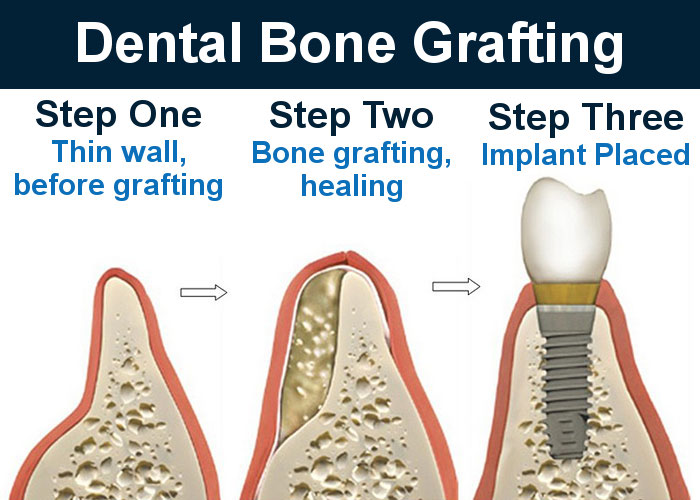
The most frequent, reason why Burbank bone grafting in dentistry may be required is the impossibility of implantation. When there is not enough bone for a dental implant to be placed, it is necessary to add to the quantity of bone in your jaw. In these cases, bone grafting makes implant treatment possible. Injury, dental cavities, infection, tooth loss, due to gum disease, can also increase the loss of bone over time. Bone grafting will provide you with a healthy jaw in those situations.
Bone grafting can be a complex procedure. For vast cases, large changes must be made to the size and shape of the area for the dental implant. Surgery must be undertaken before the implant can be placed. However, sometimes there is enough bone present to put the implant, but not quite enough to cover up the sides of the implant. In this case, a small grafting process can be undertaken at the time of implant surgery. Dental bone grafts are bioresorbable and have no allergic reaction. Please contact Dr. Sahakyan at My Dentist Burbank, if you need bone grafting. Call 1-818-578-2332 for an appointment today.
What Causes Jaw Bone Loss?
There are many factors that affect jaw bone volume.
Factors that cause jaw bone loss are the following:
• Dental infections,
• Periodontal diseases,
• Jaw traumas.
Inadequate quantity of bone tissue is not an unsolvable problem. There are many techniques to recover the missing volume.
How is Bone Grafting Performed?
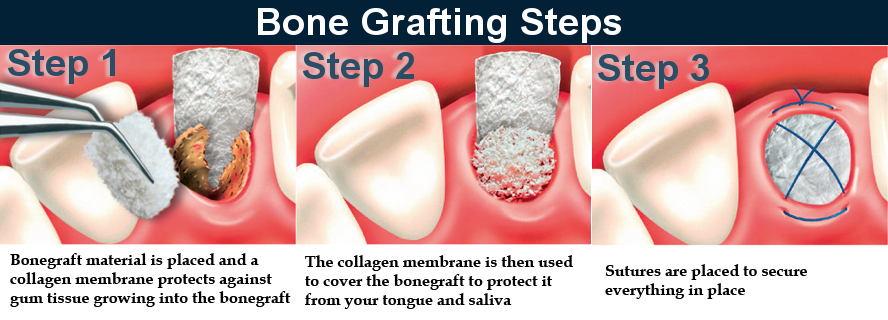
After the tooth is removed, a large hole remains in its place. Before the operation anesthesia is performed. The place of bone grafting is cleansed of soft tissues. The transplanted material is mixed with the patient’s own blood taken from a tooth socket or from a vein and transferred to the tooth socket. The site of operation is closed with a membrane, which has a high degree of biocompatibility and helps to form bone tissue. The membrane is made on the basis of collagen fiber, it can be absorbed and not resorbed. After the membrane is implanted, the wounded surface is sewn. When an implant is put, in order to better anchor it in the bone tissue, sometimes dentist use a bone tissue. Only after the formation of bone tissue, implantation is carried out at My Dentist Burbank.
Block Bone Grafting Burbank
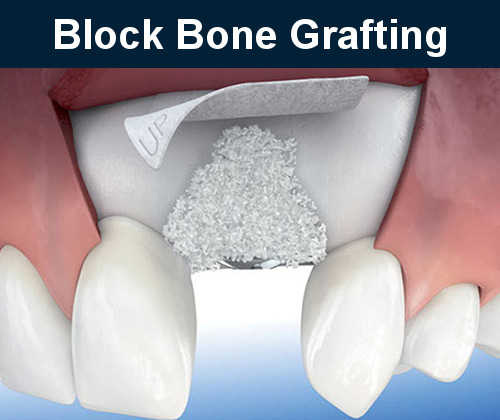
The most frequent use of bone grafting Burbank is in the application of dental implants. It is used to restore a toothless area of a missing tooth. In common, bone grafts are used in block or particulate, as to fit it better to a defect.
The bone block is a small piece of bone taken from the patient, which serves as a reliable foundation for the future implant. Most often, the bone block is taken by an intraoral method from the corner of the lower jaw, in the area of the wisdom teeth, or from the chin area. With the help of the bone block, it is possible to enlarge in size even a very thin and atrophic jaw. The buildup of bone tissue with the help of the block is carried out as a separate operation. During the procedure, it is fixed with screws, covered with a membrane and heals for several months. A new stable bone tissue is formed, and only then an implant is placed Dentist Burbank, Dr. Sahakyan.
Bone Grafting Materials
At this stage of implantology development, the following grafting bone materials are used to increase bone volume:
- Own bone tissue – autotransplantation
- Bone tissue of another person (donor) – allotransplantation
- Bone preparation of animal origin – xenotransplantation
- Artificial preparations that stimulate the growth of bone tissue -alloplasty
What are the Types of Dental Bone Grafts
Bone implants, used in dentistry, are divided into several types.
Autogenous bone grafting
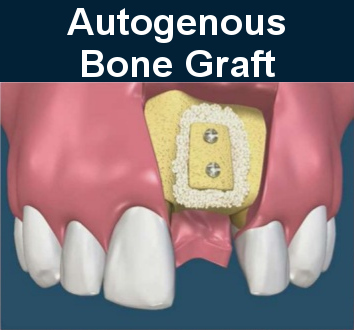
The autogenous bone graft is when the bone is taken from one anatomical area and transferred to another of the same individual. Autografts are bone blocks obtained from the patients themselves. This method is the most reliable because, during the operation, own tissues are used that have the same material of the transplant, identical in their chemical and biological composition. Each person on the lower jaw has a donor zone (chin, hard palate, iliac bone, etc.), where bone formation takes place very quickly. With the removal of the bone block for transplantation from this site, the restoration of bone tissue is carried out within 6 months. In some cases, bone tissue is taken outside the mouth, most often from the hip. Auto transplants are considered to be the best transplants since they get better results than all.
The processes of engraftment and regeneration of bone tissue occur in all patients in different ways. They depend on the individual anatomy, the volume of bone reconstruction, the presence of bad habits, for example, smoking.
Allogeneic bone grafting
Allogeneic bone is when the bone is taken from an organism of the same species, processed and sterilized in a tissue bank. The materials are taken from donor people. In many countries, there are programs that allow people to take their organs in the event of death to help other people. Bones obtained in this way are carefully checked and processed so that they lose the individual properties of the donor and become building material.
Xenogenic bone grafting
A xenogenic bone graft is when the bone is taken from an organism other than the recipient species. The bone materials are usually taken from animals. The bones are treated in a special way, sterilized, render them biocompatible. The most commonly used is bovine or porcine bone. This bone is specially processed, thermally and chemically devoid of protein, therefore it does not bear antigenic properties.
Alloplastic bone grafting
Alloplasts – bone substitutes is a synthetic material that does not contain organic matrix. The material is synthesized in the laboratory. Alloplastic transplants are inert, artificial synthetic materials that mimic natural bones. They can be both absorbable and non-absorbable. This suggests that over time, such a transplant can be completely replaced with its bone or remain as a lattice for the growth of natural bones.
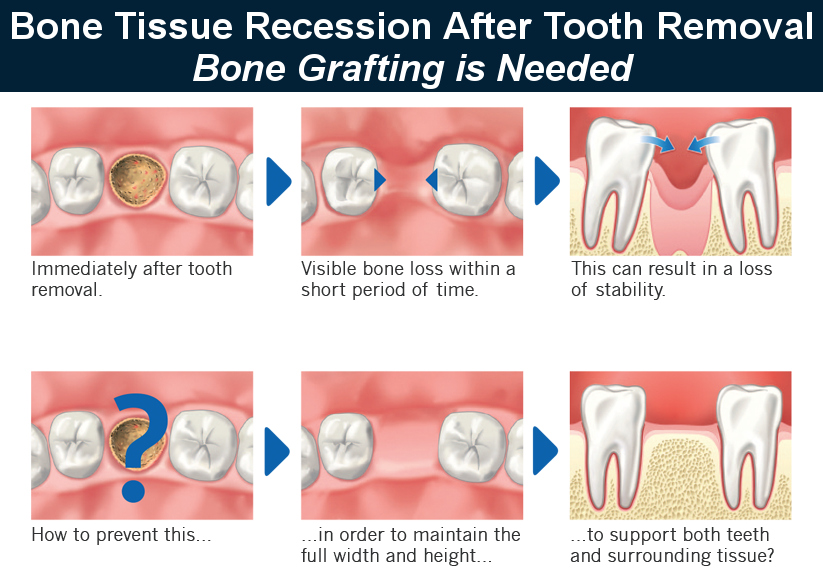
The process of engraftment of bone tissue largely depends on oral hygiene and the correct observance of the recommendations of the dentist Burbank. It is important that for smokers in the first days after the operation, the tobacco consumption is eliminated or minimized as much as possible. In the first week after the operation, it is better to reduce any physical activity to a minimum.
To get any type of bone grafting consultation from the best dentist in Burbank, contact Dr. Sahakyan at My Dentist Burbank.


